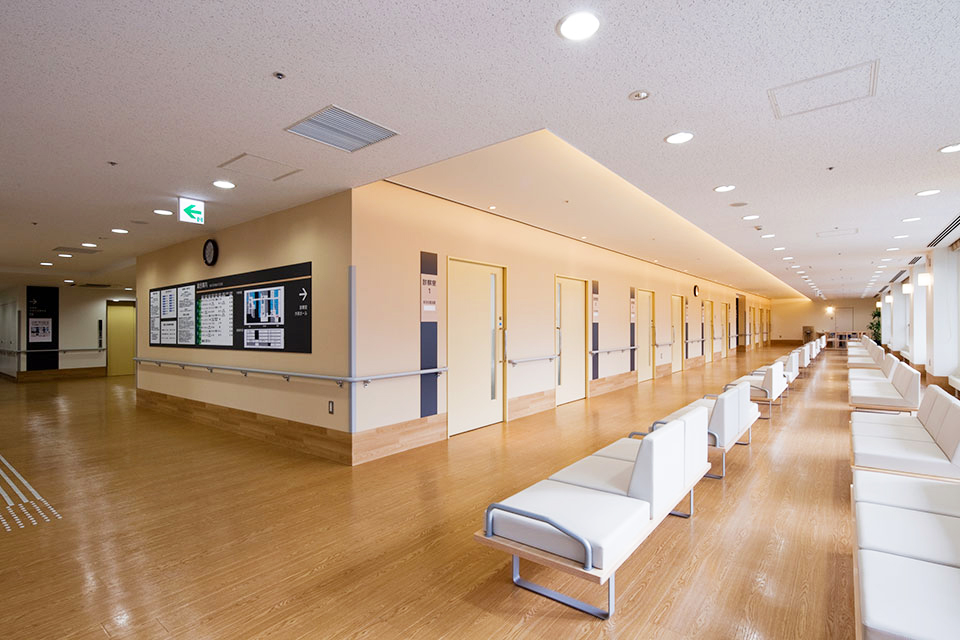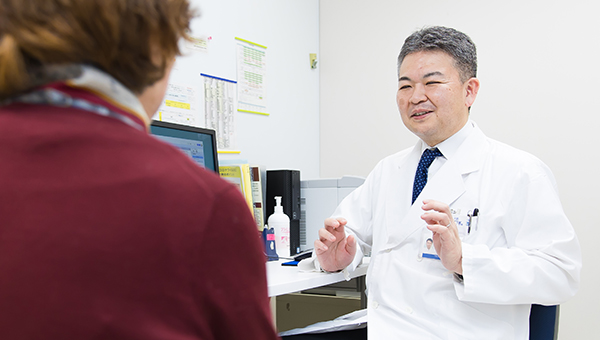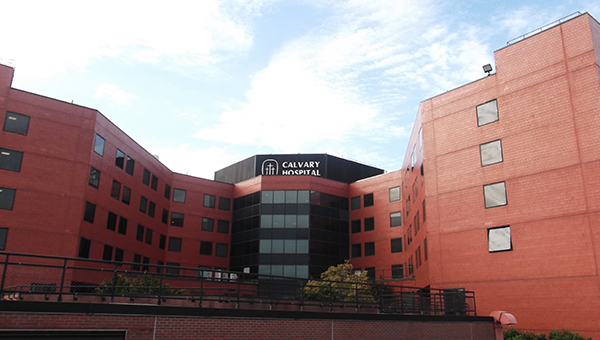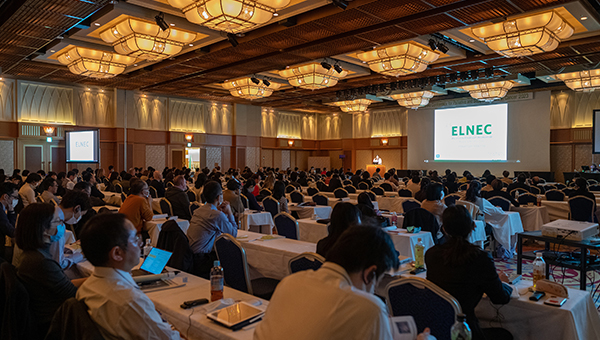

Higashi Sapporo Hospital was founded in 1983 by Dr. Kunihiko Ishitani as a hospital for patients with advanced, recurrent, or terminal cancer. Currently, the hospital operates in Sapporo City as a nationally certified specialist cancer hospital with a particular focus on palliative care. Its operations are centered on a 243-bed facility (with 58 beds for palliative care), but it also provides home care services and a 100-bed nursing home. One special feature of Higashi Sapporo Hospital is that it can provide chemotherapy, surgery and radiotherapy as necessary adjuncts to palliative care for cancer patients, and it currently provides care for approximately 20% of deaths from cancer in Sapporo City each year.
Higashi Sapporo Hospital has had a sister institution relationship with Calvary Hospital in New York City since 1993, and is engaged in a regular staff exchange program. Calvary Hospital, with 130 years of history, specializes in palliative care. The two hospitals conduct mutual staff training and hold joint conferences.
Further, Higashi Sapporo Hospital in collaboration with Calvary Hospital and Memorial Sloan-Kettering Cancer Center (MSKCC) jointly held the 1993 Hawaii Conference: Cancer Care in the 1990’s Supportive Care Issues, an international conference that attracted many medical professionals from Japan and represented the birth of palliative care in Japan.

The 1st Congress of the Japanese Society for Palliative Medicine was held in Sapporo City in 1996. At that time, Dr. Jean Klastersky, one of the founders of the Multinational Association of Supportive Care in Cancer (MASCC), was invited to provide advice on the establishment of the conference. Dr. Russell Portenoy, an authority on cancer-related pain and a close friend of Dr. Ishitani, also gave a special lecture. Since then, we at Higashi Sapporo Hospital are proud to have hosted a number of domestic conferences related to palliative care and helped to develop cancer palliative care in Japan.
Forty years have now passed since the establishment of the Higashi Sapporo Hospital. During that time, based on a team approach, medical examinations and subsequent care have been provided on a daily basis for the benefit of patients, their families, and the community as a whole. Care is a collaborative act between the caregivers and recipients in which both parties grow together. Currently, we hold a triennial international conference to commemorate our steady growth to date and to connect the vision of Higashi Sapporo Hospital with the future.

The 1st Sapporo Conference for Palliative and Supportive Care in Cancer (SCPSC) was held in 2014, with more than 800 participants from 22 countries participating. The 2nd Conference took place in 2017 and the 3rd /4t joint conference was held over 3 days from April 27th to 29th, 2023.
At the 3rd/4th joint conference, discussions were held at a very high level, and the content and quality of each lecture was quite overwhelming. Thus, the SCPSC has become Asia’s leading academic conference on palliative cancer care.
・Synopsis of a conference that nearly never happened – The 2023 Sapporo Conference for Palliative and Supportive Care in Cancer (SCPSC) in Japan (2023/9/12 BMJBlog)
The 5th SCPSC is scheduled to be held in 2026, three years later. A draft program is currently being presented. (1) Focusing on opioids, a symbol of cancer palliative care, and discussing their relationship with the nervous system, immune system, and endocrine system; (2) Discussing each area of palliative oncology in more detail; (3) Psycho-oncology science, (4) recent developments in light of the essential debate on euthanasia, and (5) the role of artificial intelligence in palliative care, a field that is evolving very rapidly.
Details will be posted on the SCPSC website as soon as they are decided.
Sapporo Conference for Palliative and Supportive Care in Cancer
There is no doubt that science technology has dramatically been progressing in the medical field of the 21st century. We need to be actively involved in the progress.
In addition, we have to remember that the progress is a social phenomenon as well as a medical phenomenon. There are two factors in the limits of medicine. One is death which is a fundamental limit. The other is a situation that medical care is subject to the value system of the society. With an increasingly diversified value system of the society, we think that medical care and public welfare of the 21st century should be established by the whole local community. The medical care system in this situation is comprehensive care from health promotion to prevention, diagnosis, therapy and rehabilitation, what is called, Primary Health Care (holistic medicine, comprehensive medicine). Since the PHC is based on good persons and a good local society, Higashi Sapporo Hospital intends to participate in the local community in the network of PHC, making use of our characteristics.
Four major diseases in the 21st century are considered to be “heart diseases”, “cancer”, “mental disorders” and “congenital malformations”. Higashi Sapporo Hospital has mainly focused on “cancer”. In addition to this, we intend to deal with other various diseases such as adult diseases and chronic illnesses which will probably increase in an aging society. These are treated in primary health care, and we think that various problems surrounding “cancer” are a starting point of our philosophy that is composed of health and happiness.
This practice is performed in palliative care; the hospice care is the symbol of that practice.
Higashi Sapporo Hospital is managed under this medical mission. Palliative care is based on “Team approach”. Experts in various fields provide medical services to patients by having communication with them and their families under the concept of how to live out the rest of a patients’ life. That’s exactly the essence of primary health care. “Team approach” is a model of the structure of medical care in the local community.
Community (collaborative society) is a group of people working on a central matter together. Doctors should devote themselves to their studies with science technology called medicine, nurses should assist the maturity of humanity including themselves from the standpoint of integrated anthropology called nursing, and other staff members engaged in hospital service should also work on services with a desire to improve themselves as professionals. Moreover, it is very important for not only patients and their families with individual social backgrounds but also volunteers to have recognition of participation in the community. Let us respect each other and create “happiness for people” and healthiness on an equal footing.
The essence of medical care is compassion and kindness.
This practice is performed in palliative care; the hospice care is the symbol of that practice.
Based on the Mission Statement of Higashi Sapporo Hospital, our nursing department does not treat patients and their families as just as those who suffer pain and agony but treat them as irreplaceable people with dignity. Based on our knowledge and experience of hospice/palliative care as a cancer-specialized hospital, we work toward providing comprehensive medical care to our patients that includes cancer prevention to end-of-life care.